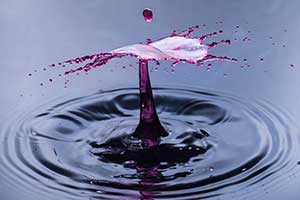Macro Photography of Plant Roots, A Unique Plant Perspective – Watch on YouTube

Macro Photography of Plant Roots
Macro photography often focuses on the beauty of flowers and leaves. But there’s a hidden part of the plant world that rarely gets attention – the roots. This guide explores how to photograph plant roots using macro techniques, creative lighting, and composition to reveal their abstract and often eerie beauty.
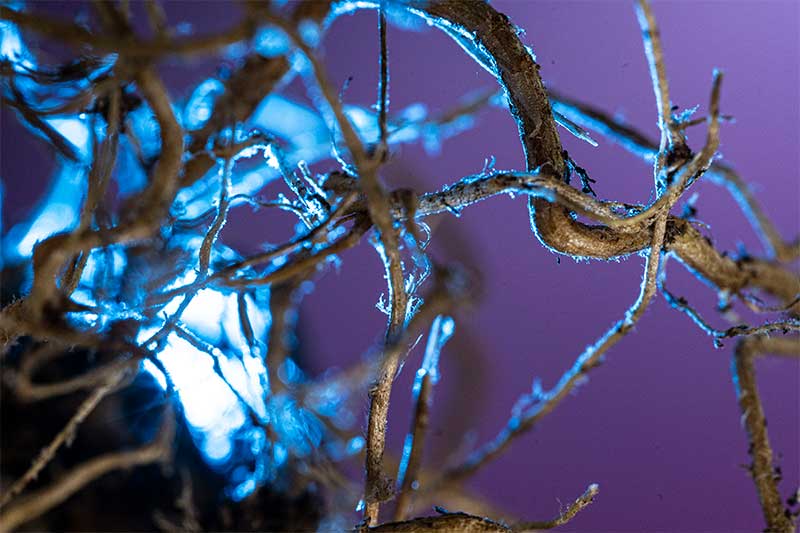
Why Photograph Roots?
Roots are usually hidden underground. They’re tangled, messy, and not conventionally beautiful. That’s exactly what makes them interesting. Their complex structure and earthy textures offer a unique challenge. With the right setup, they can become dramatic and abstract subjects.
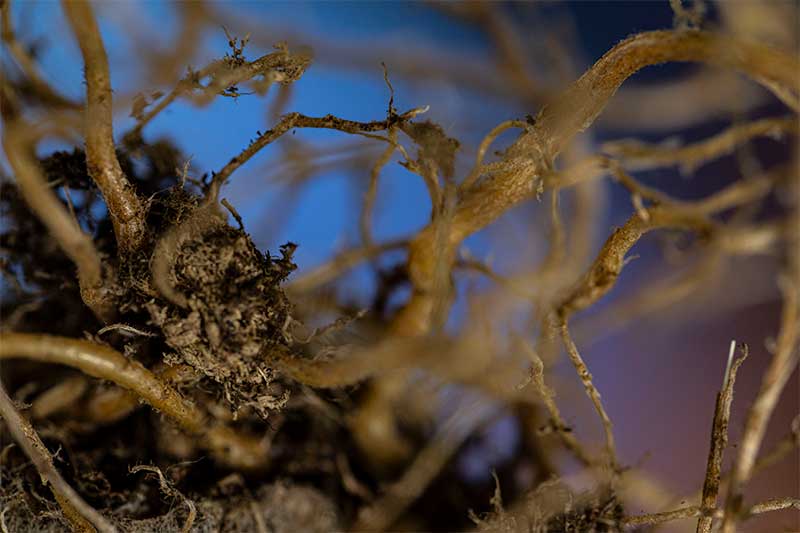
Preparing Your Subject
Start by carefully uprooting a few plants. Dry conditions help reduce mess. Remove as much soil as possible, but expect some to remain. Choose a workspace that can handle dirt. A photography table is ideal. Avoid using surfaces that are hard to clean.
If you’re unsure what kind of plant you’ve pulled up, that’s fine. The focus here is on the roots. Use a macro subject holder like this to clamp the roots in place. This lets you position them freely and isolate them from distracting backgrounds (though we will be adding backgrounds later!).
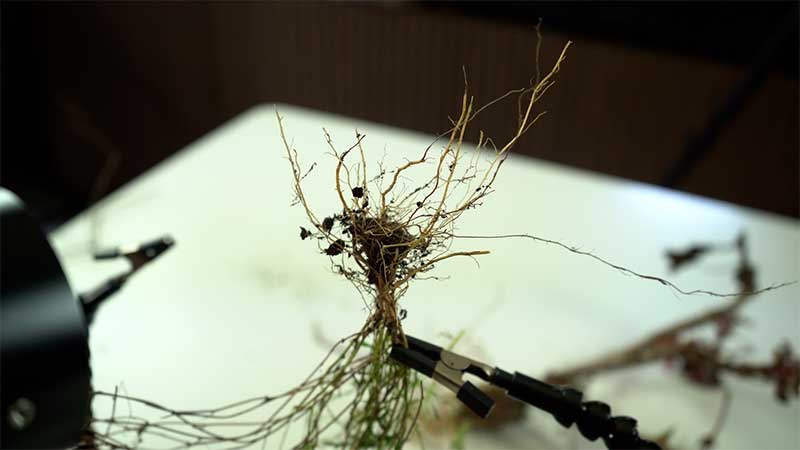
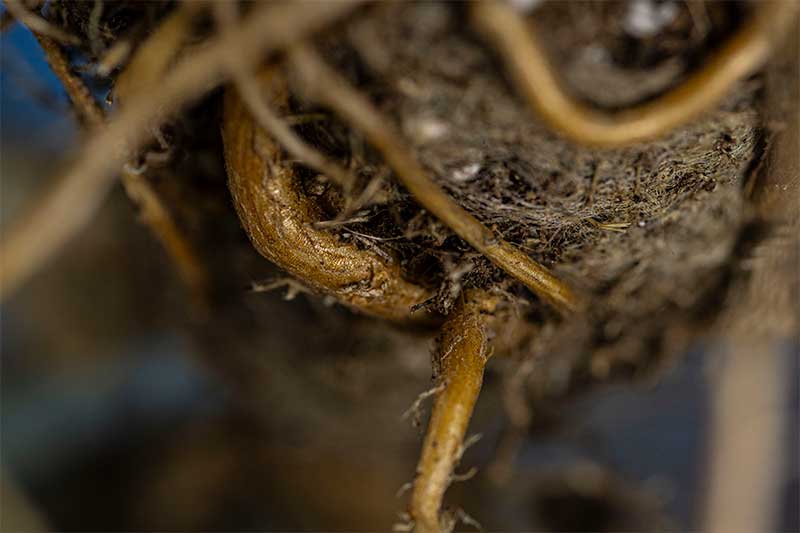
Composing the Shot
Mount your camera on a tripod and experiment with angles. Photographing roots upside down adds an abstract twist. You can flip the image in post-processing or embrace the inversion to challenge expectations.
Start with ambient light. You might notice unexpected colour influences from your surroundings. For example, a blue highlight from a nearby box. These accidental colours can be used creatively. You can also introduce intentional lighting and backgrounds to take control of the mood.

Focus Stacking, Optional but Tricky
Focus stacking helps bring out the intricate details of interwoven roots. However, it’s not essential. A shallow depth of field adds mystery and softness. It can make the roots look like alien forests or eerie landscapes.
If you try stacking, be prepared for some trial and error. Complex subjects like roots can confuse stacking software. Upload a few test shots to your computer mid-shoot to decide whether stacking is worth the effort. If not, embrace the natural blur and let the depth of field guide the viewer’s eye.
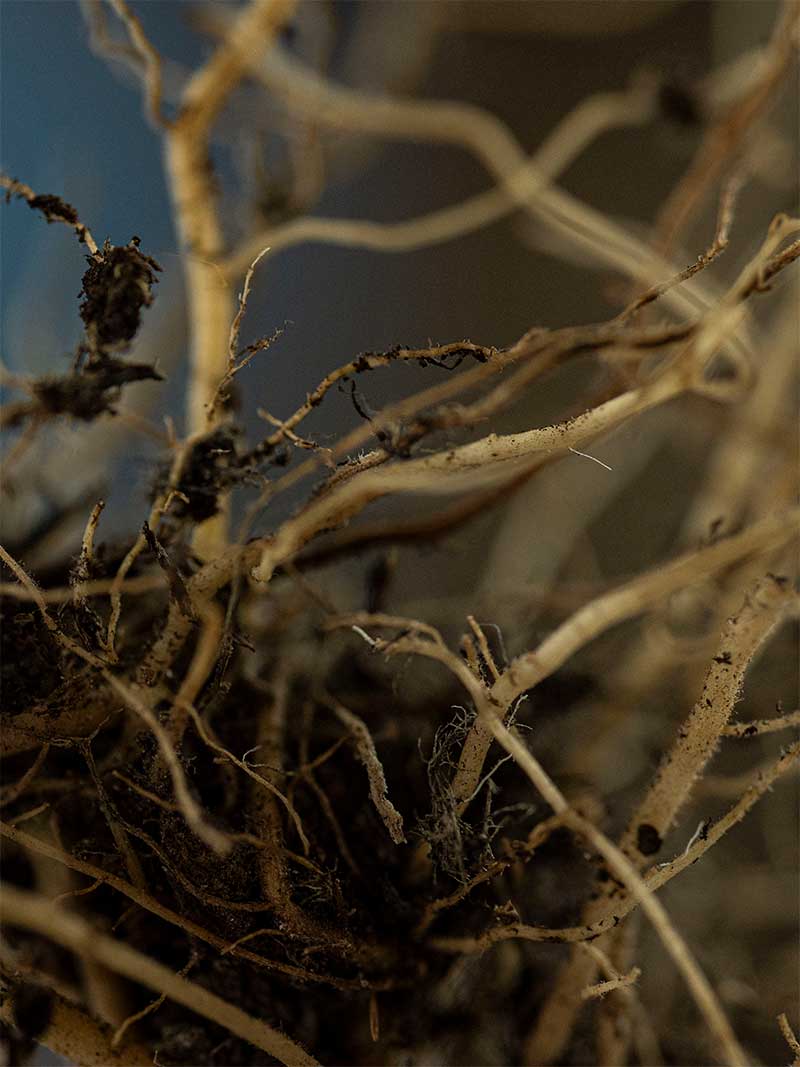
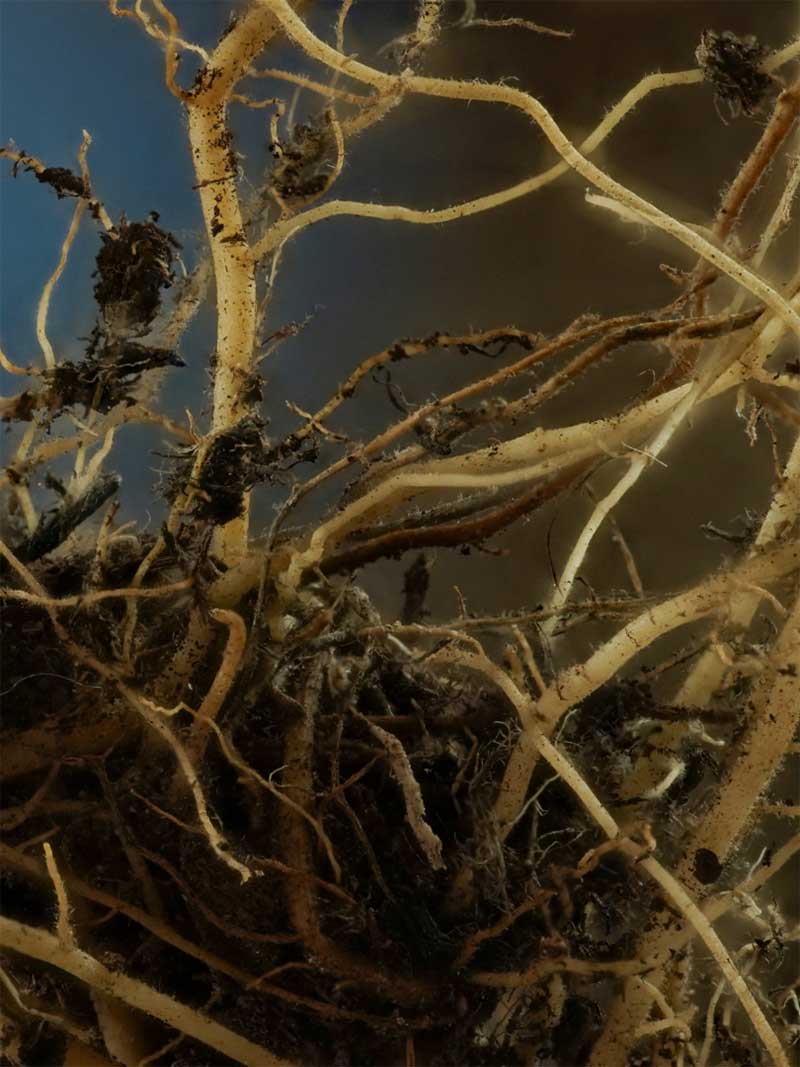
Lighting with Adaptalux
To elevate your shots, introduce lighting using the Adaptalux Studio system. A single white lighting arm with a diffuser can be placed close to the roots. Its compact size allows for dramatic lighting that highlights textures and shapes.
For added impact, use coloured lighting arms and background gradient cards. Position a coloured card behind the roots and light it with a separate arm. Adjusting the card’s position changes the colour balance in your shot. Blue and orange gradients can create warm or cool moods with just a small shift.
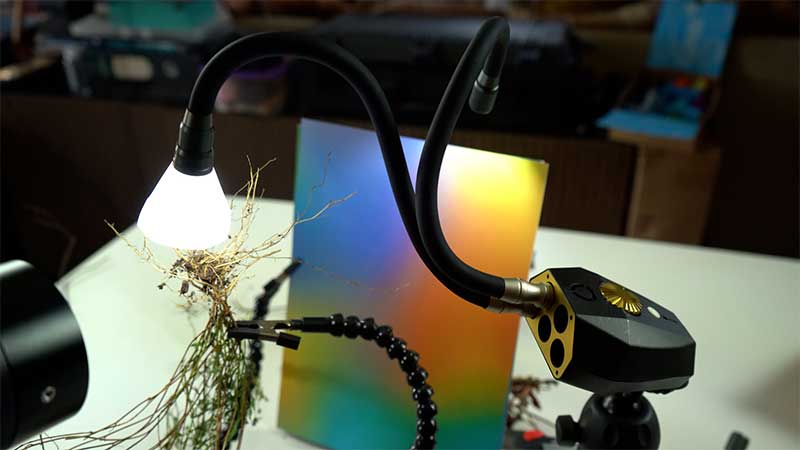
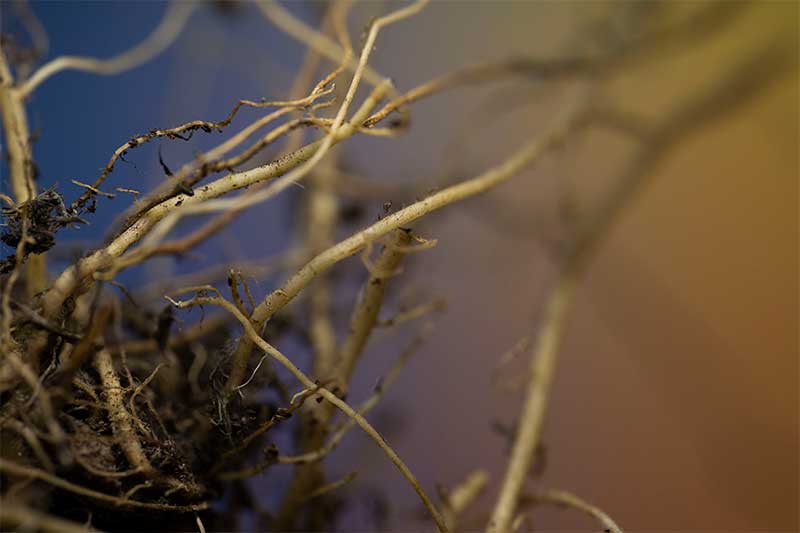
Playing with Colour and Mood
Switching colours can completely transform the feel of your image. For example, an amber light with an orange background creates a warm, sunset-like glow. Leaving the light source visible in the frame adds a halo effect. This makes the roots resemble trees silhouetted against a setting sun.
On the other hand, swapping to a blue light and a purple-blue gradient background evokes a cold, spooky atmosphere. This is perfect for Halloween-themed photography. The same roots now look like dead trees in a haunted forest. This shows how colour and lighting can dramatically alter perception.
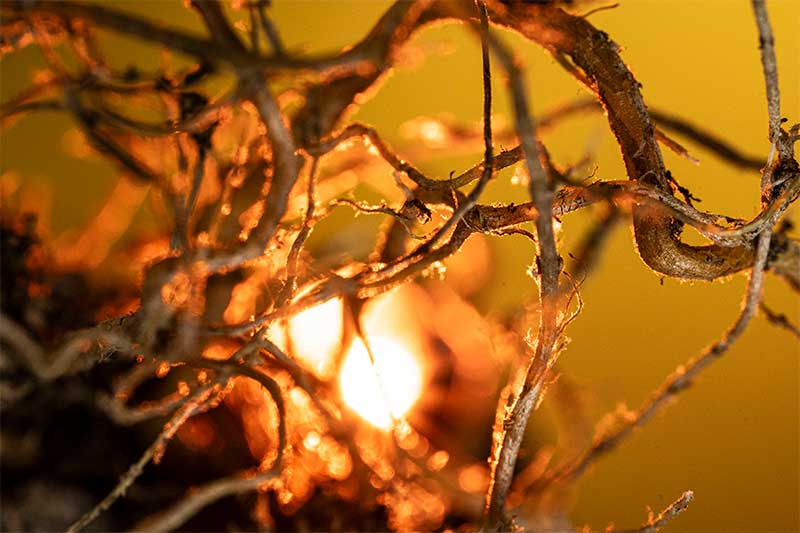

Experiment and Explore
Macro photography of plant roots is all about experimentation. Try different lighting setups, background colours, and compositions. Use the Adaptalux Studio system to get creative with coloured lights and gradient cards. The macro subject holder keeps everything stable, allowing you to focus on the artistic side of the shoot.
Roots may not be visually striking on their own. But when grouped together and lit creatively, they become fascinating subjects. Their interlocking forms and natural chaos offer endless opportunities for abstract photography.
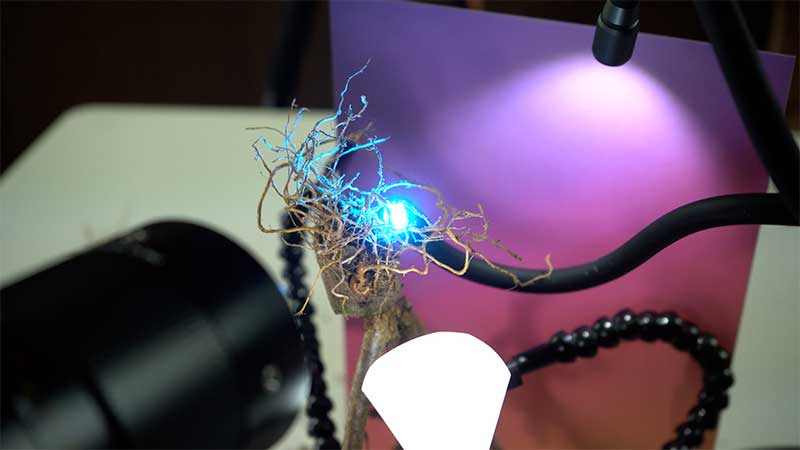
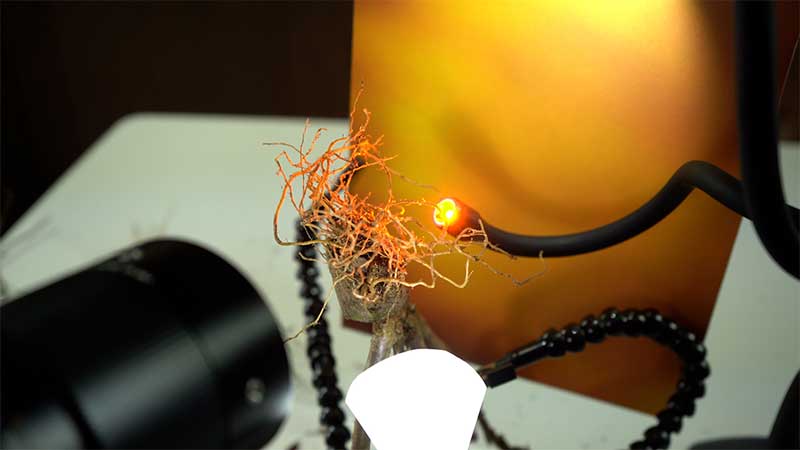
Photographing roots flips the usual approach to plant photography. Instead of focusing on the vibrant blooms above ground, we explore the hidden structures below. It’s a reminder that macro photography is about seeing the unseen and finding beauty in unexpected places.
Whether you’re aiming for warm, dreamy compositions or eerie, seasonal themes, roots offer a canvas for creativity. So next time you’re in the garden, consider turning your plants upside down and discovering the world beneath.
Remember to subscribe to our YouTube channel for regular macro photography tutorials, ideas and inspiration.
- 5 Creative Macro Photography Projects to Try in 2026 - 28th December 2025
- Creative Car Photography – Inside Engines with the Laowa 15-35mm Probe Zoom Lens - 14th December 2025
- Abstract Water Macro Photography – Creative Photography in the river! - 30th November 2025











